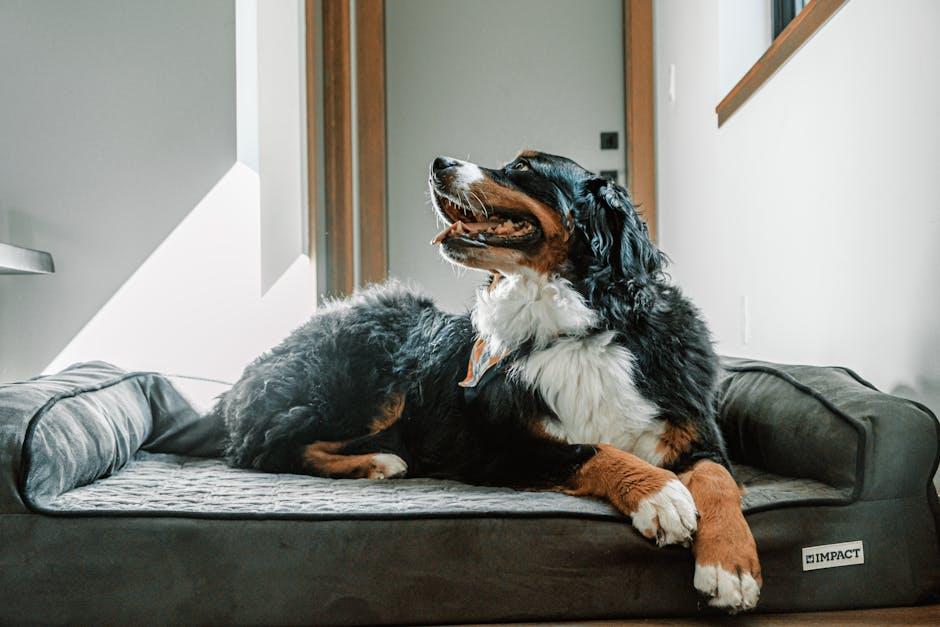When natural disasters strike, the safety of our beloved pets becomes a top priority. Our dogs, who offer us unconditional love and companionship, rely on us to ensure their well-being during such challenging times. Understanding how to keep your furry friend safe when faced with unexpected emergencies is crucial for every pet owner. In this guide, we’ll explore practical steps and thoughtful strategies to protect your dog during natural disasters. With preparation, empathy, and a little planning, you can ensure that your canine companion remains secure and comforted, no matter what Mother Nature throws your way.
Preparing a Pet Emergency Kit with Love
When it comes to assembling a pet emergency kit, it’s all about preparing with love and care. Gather essential items that will keep your furry friend safe and comfortable during trying times. Start with a sturdy, waterproof container that’s easy to carry. Inside, include the following essentials:
- Food and Water: Pack at least a week’s supply of your dog’s regular food, along with portable water containers and bowls.
- Medications and Medical Records: Keep a current list of medications and their dosages, along with copies of vaccination records and any medical history.
- Comfort Items: Include a favorite toy or blanket to help reduce stress and provide comfort.
- First Aid Supplies: Assemble a pet-specific first aid kit with bandages, antiseptic wipes, and a pet first aid guide.
- Leash, Harness, and Collar: Ensure you have an extra set for secure handling and identification tags with up-to-date information.
Remember, the key to a successful pet emergency kit is personalizing it to meet your dog’s unique needs. By thoughtfully preparing, you’re not just gathering supplies; you’re ensuring peace of mind for both you and your beloved pet.

Creating a Safe Haven at Home for Your Furry Friend
In times of natural disasters, ensuring your dog’s safety is paramount. Begin by designating a specific area in your home as an emergency safe space. This should be an interior room, away from windows and with minimal noise disruption. Stock this area with essential supplies such as food, water, a first-aid kit, and your pet’s medications. Consider adding a few comforting items like a favorite blanket or toy to help ease anxiety.
- Prepare an emergency kit: Include a leash, harness, and a recent photo of your dog in case you become separated.
- Microchip your pet: This increases the chances of a reunion if your dog gets lost.
- Create a pet-friendly evacuation plan: Identify pet-friendly shelters or hotels in advance.
During a disaster, keep your dog on a leash or in a carrier to prevent them from running away in panic. Stay calm and reassuring, as your pet will take cues from your behavior. Familiarize yourself with the local emergency contacts and resources for pets. By preparing ahead of time, you create a sanctuary of safety and calm for your beloved furry friend.

Planning an Evacuation Route with Your Dog in Mind
When planning your evacuation route, consider your dog’s needs as a top priority. Start by researching pet-friendly shelters or hotels along your route and save their contact information. Familiarize yourself with their pet policies to avoid any last-minute surprises. It’s also essential to identify local veterinary clinics and animal hospitals in the vicinity, just in case your dog requires medical attention during the evacuation.
- Keep a leash and harness readily accessible: This ensures you can quickly secure your dog when it’s time to leave.
- Prepare a dog-friendly travel kit: Include items like food, water, a portable bowl, medications, and comfort items such as a blanket or a favorite toy.
- Practice the route: If possible, take your dog on a trial run of the evacuation route. This will help familiarize them with the journey and reduce anxiety during the actual evacuation.
- Update your dog’s ID tags and microchip information: Make sure your contact information is current to increase the chances of a safe reunion if you get separated.
By integrating these steps into your evacuation plan, you’ll not only ensure a smoother escape but also provide your furry friend with the comfort and security they deserve during stressful times.

Staying Calm and Comforting Your Dog During a Crisis
In the midst of a natural disaster, maintaining a calm demeanor can significantly impact your dog’s emotional well-being. Dogs are incredibly perceptive and can pick up on human emotions, so it’s essential to project a sense of tranquility. Speak softly and use gentle, reassuring tones to convey that everything is under control. Offer physical comfort by petting or holding your dog, which can help reduce anxiety. If your dog is crate-trained, consider having their crate nearby as a safe haven, as familiar spaces can be comforting during stressful times.
- Preparation: Keep a bag ready with your dog’s essentials, including food, water, medications, and favorite toys, to ensure you can grab them quickly if evacuation becomes necessary.
- Routine: Stick to familiar routines as much as possible to provide a sense of normalcy. Feeding, bathroom breaks, and short playtimes can help ground your dog amidst chaos.
- Distraction: Engage your dog with interactive toys or simple training exercises to redirect their focus away from the stress of the situation.
Remember, your presence is the greatest comfort you can offer. By staying calm and attentive, you help reassure your dog that they are safe and protected, even in the most challenging circumstances.

